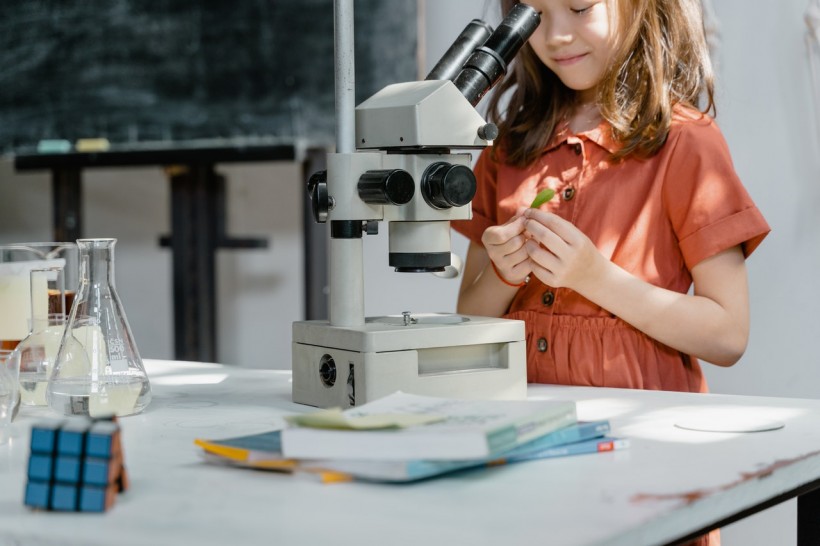Curiosity is part of human nature. People, especially children worldwide, share this value, and supporting it can help your child's growth, allowing them to explore their surroundings with an open mind. There are several ways of fueling curiosity, but one significant way is through encouraging them to try out science experiments!
You can use the materials you can find in your everyday life to try out numerous simple yet mind-blowing hands-on projects for your little kids to do at home. To give you a head start, look into these five kid-friendly experiments they can do and get ready for them to learn and have fun at the same time!
Water Bottle and Tissue Experiment
Materials Needed:
1 Water Bottle or Drinking Glass
1 Piece of Tissue or Paper Towel
Water to Fill Inside the Water Bottle
To begin with, you need to fill up the water bottle or glass with water. Make sure to fill it up entirely for it to work! Then, gently place a piece of tissue on the top of the bottle or glass to cover them. Finally, flip the bottle upside down and watch how the water is not spilling everywhere! This result is due to the air pressure which holds the tissue up the bottle and lets it stay there. Thus, no water will spill.
It is best to do this experiment in the sink to prevent spilling accidents. You can use a learning tower for your kid if they cannot reach the sink to climb the height safely. You can visit https://myhappyhelpers.com.au/ to learn more about learning towers!
Rubber Egg Experiment
Materials Needed:
1 Raw Egg
1 Vinegar
1 Container or Jar
Place the egg inside the jar and pour vinegar to cover up the egg. Leave it for 48 hours and rinse it off with water afterward. Observe how the egg has this rubbery texture that bounces off if it falls off from a low height!
You might wonder how this raw egg turned into a bouncy egg? The answer is simple. The eggshells contain calcium carbonate that, when mixed with an acid, the vinegar, creates a reaction that causes them to bounce.
Egg in a Bottle Experiment
Materials Needed:
1 Peeled Hard-boiled Egg
1 Glass Bottle
1 Match
1 Piece of Paper
Usually, an egg is too large to fit inside a glass bottle since the opening on top is too narrow. But, in this experiment, you will discover that it is possible. First, light the small piece of paper using a match and drop it inside the bottle. Quickly put the hard-boiled egg on top of the bottle after and watch how the egg will slowly be drawn inside it when the fire goes out.
The result is caused by the contraction and expansion happening in the air pressure inside the bottle. The air expands when you drop the lit piece of paper inside the bottle. However, the air inside the bottle cools as the fire goes out, which causes the air pressure to contract, pushing the egg inside the bottle.
Bending Water Experiment
Materials Needed:
1 Nylon Comb or Balloon
Small Stream of Running Water From the Faucet
Let's dive into the subject matter of static electricity! Charge up your comb or balloon by rubbing it in your hair or your shirt several times, then slowly put it about an inch or smaller close to the stream of running water. Following this, watch how the water bends to the charged-up comb or balloon!
The accumulation of electrical charge on an object that happens when you rub two things against each other is known as static electricity. So, when your hair and comb rub against each other, they become negatively charged, attracting the positively charged stream of water. Thus, bending the water.
Self-Inflating Balloon Experiment
Materials Needed:
1 Balloon
½ Cup of Vinegar
1 Tablespoon of Baking Soda
1 Bottle
You will learn all about chemical reactions with this experiment. First off, put at least a tablespoon of baking soda inside the balloon. Also, put ½ cup of vinegar inside the empty bottle. Then, stretch your balloon over the top of the bottle, guarantee that it tightly fits into it and dump the baking soda into the bottle. After this, sit and relax as you watch the balloon inflate!
Combining vinegar and baking soda develops a chemical reaction. In this experiment, an acid, the vinegar, is mixed with a base, the baking soda, which would eventually produce carbon dioxide that fills the balloon, causing it to inflate.
Takeaway
Curiosity can widen the horizon of every single person. Children are naturally curious. They constantly ask why things are the way they are or inspect every object they see. Trying out the experiments from this guide is already a massive step in fueling your children's curiosity. They would discover many things about different aspects of life and, most importantly, have fun along the way.
* This is a contributed article and this content does not necessarily represent the views of sciencetimes.com















